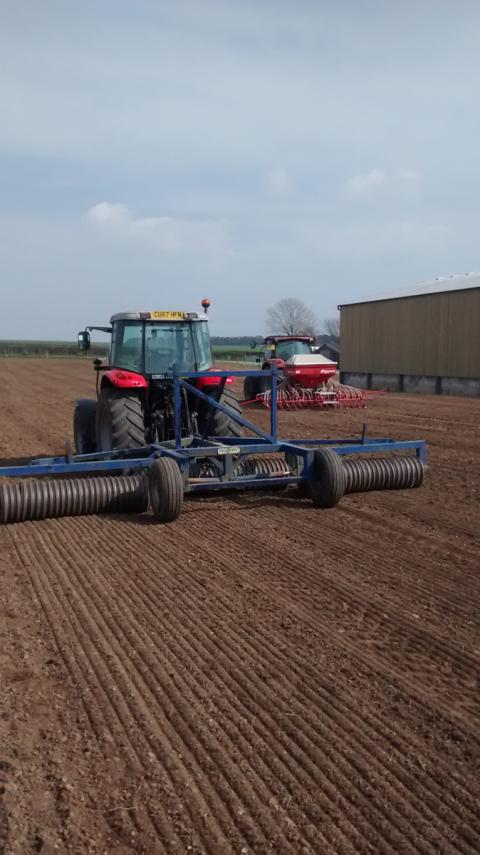GROWING protein crops on-farm can provide a cost-effective and sustainable alternative to bought-in animal feeds. Lupins are a high-protein, high-energy crop that could significantly reduce feed costs and improve the resilience of Welsh farmers against fluctuating prices.
Lyndon Joseph has been growing lupins and using them in rations for his livestock at Mount Pleasant Farm, Stormy Down, Pyle for about 14 years. He had previously been buying in soya-based protein for the mill and mix ration, but when the price escalated to £1,500 one month, it was no longer cost effective and he decided to try growing his own protein. After a five-acre trial crop of lupins proved successful, the annual legume has been incorporated into the crop rotation ever since.
“Lupins have become a very good tool in our rotation and fit in with our aim of trying to grow all our own feed on the farm and buying in as little as possible,” said Mr Joseph. “We’ve always grown grain to feed our livestock and the lupins add a ready source of protein and are nitrogen-fixing, so the crop that follows them performs well. Growing protein crops is definitely something to be considered with the volatility in the protein market.”
Mr Joseph finishes 200 cattle a year, bought as stores at six months old, and uses the lupins in the finishing rations as they are high in protein - typically between 31-45% - with a typical ME of 14.7MJ/KgDM. The rations comprise 10% lupins, mixed mainly with barley and a small amount of oats or wheat, with added minerals for the younger cattle.
“The lupins are very palatable and very high in protein. We mix them with home-grown cereals to create a balanced feed and the cattle finish very well on it,” he added.
Mount Pleasant farm comprises 300 acres of grass and 200 acres of arable crops, with about 15 acres of the blue lupin variety Iris grown each year. The lupins are sown in early to mid-April and prefer lighter soil types. Seed costs are £55 per acre, a 20:10:10 fertiliser is applied at a rate of three hundredweight/acre (152kg/ac) which costs £35/ac, and spraying costs are £60/ac. A pre-emergence spray is used, followed by another treatment later on, then the crop is desiccated before harvesting. Harvest takes place in September and after being combined the lupins are crimped and stored in bags. The average yield per acre is 1.25 tonnes.
“We try to combine the crop as dry as possible before crimping so they store well and it’s important to avoid frost at sowing. The crop is very open and can be quite susceptible to weeds in a wet year, so it’s important to keep on top of that,” said Mr Joseph.
“As lupins are a legume and fix nitrogen in the soil, an advantage we’ve found is that the crop we follow them with will yield about a quarter of a tonne more per acre, thanks to the effect of drawing nitrogen into the ground.”
As well as using the lupins himself, Mr Joseph also supplies them to local farmers as a sustainable feed source. “We mill and mix lupins and barley and sell them off the farm to local farmers who feel it’s a lot more cost-effective than buying in compound feeds.”
The Farming Connect Knowledge Exchange Hub has produced technical articles on alternative sources of protein for animal feeds. To find out more, click here.

